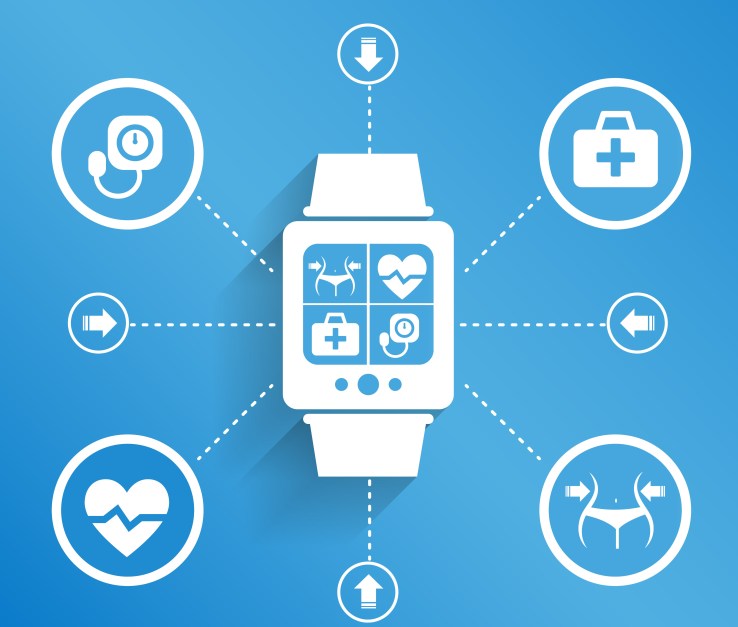
- Products
- Solutions
- Learn
- Partner
- Try Now
The Top Tens
In this era of highly personalized convenience at your doorstep, it is no surprise that consumer demands should soar as concerns the healthcare sector.

If we take a look at the top 10 funded companies in the on-demand world and examine them by sector, then along with transportation and food delivery, healthcare is the sector to look out for. Two companies, TelaDoc and American Well have occupied their positions here with $245 and $141 respectively in their piggybanks, and these stats come from a Forbes article from February!
The potential for this industry is immense, especially as new entrants who are heavily techno-centric come into the fore. Healthcare is also one of those sectors that weigh in both, socially and economically. The right to free healthcare for every citizen is not quite being met by public offices and governmental efforts, which is why we also see a new era of collaboration. The consumer side of healthcare might be different, but in reality, it is slowly encroaching on the standardized reactive system that has been dominating the industry till date.
Let’s face it – those in the developed, more fortunate regions of the world are also not guaranteed efficient, streamlined and all-inclusive healthcare. Testing and diagnostics aren’t exactly affordable for the more cumbersome diseases, and staffing is a genuine problem. The lack of trained personnel who can be effectively matched with ailing populations is felt throughout – be it the United States, or a country like India.
There are many keywords that can occupy our attention – but here, the focus is on convenience, reliability, efficiency and affordability. If your company can balance their solutions with regards to these, success is not altogether too far away.
Accenture determined that the healthcare sector was the fastest to grow from 2010 to 2014, and is only second to the transportation mammoth in the on-demand world. Investment in these services has also been pegged by Accenture to go as high as $1 billion by 2017 in the US alone – globally, a PWC report shows us the astounding figure of $9.59 trillion. With this investment, however, comes disruption on a large scale – this is also a warning for all stagnant operations in this sector.
From Reactive to Proactive
Proactivity characterises the tremendous innovation and diversification of this sector. From personal biosensing devices to smart mobile apps, to personalized fitness and healthcare programs – the shift is only invisible to ignorance.
Many experts predict half of the hospitals to shut down by 2020, and we see an effect in Denmark already, with 70% of its hospitals closed, having made a transition already.
This proactive system hinges on the development in the IoT concept – the internet of things will be essential in converting most devices like smartphones and watches into healthcare supplying units, from consultation, to diagnostics and even the delivery of medicines at your doorstep. This is aided by immense investments in Big Data and Analytics in businesses the world over. How does that help? Well, when you can effectively monitor patients remotely, or even populations with the tools big data allows us, one can see a more targeted approach. A lot of confidential data and records can be stored seamlessly on the cloud, for ready and conditional (secure) access at the provider’s fingertips. The global healthcare analytics market is hence expected to grow and reach $18.7 billion by 2020 in this vein.
Systemic Challenges
The reasons for this system to be re-examined and disrupted are many, and can perhaps only be solved by the smart application of technology to extant and new enterprises.
The aging population in most developed nations is a biggie. Many elderly people have a dire need for monitored, effective healthcare. More importantly, convenience is a matter of necessity for them, if they cannot make it to the hospital, or to the clinic to attend to their woes. Thus, there is a significant demand for elderly healthcare. Personnel also need to be managed accordingly, as there is a shortfall that is anticipated.
Demographically speaking, chronic diseases are on the rise. A few listed notorieties are: depression, diabetes, heart disease, stroke, cancer, chronic respiratory diseases, and mental illness, and all of them require quality attention to curtail their spread, and to provide healthcare to the afflicted. Death due to natural causes is something only a small portion of the global population enjoys. Sedentary lifestyles, and the double-edged effect of development (which grants wanton indulgences) are known causes – the same can be approached with the consumer options for alternative, healthy indulgences on the rise. For every burger, there aims to be a nutritious alternative.

Access to care in general is a known systemic problem. Rusty policymaking and a reluctance to technologize for efficiency has been a dagger in the back, because this in itself brings the threat of disruption by newer players. Costs can be reduced and quality increased – this flaw is what is capitalised on.
Lastly, patient confidentiality and regulations are also prone to violation by breaches and the like. This gives rise to the demand for data security systems and other cloud-based approaches to information storage and secure access.
Where is the Disruption at?
So, we’ve given you ample reasoning as to why you should be looking at this sector to venture into. Where and how can you be a disrupting agent? The answer, of course, comes in the form of a technological approach.
In our recent post on Telehealth, we outlined what the new players were gunning for.
- Wearables and biosensing technology (FitBits and the like)
- Analytics and Big Data (for aggregating use cases and research)
- Healthcare Consumer Engagement (Direct purchase of healthcare products for businesses – mostly B2B models, with some B2C concerns)
- Telemedicine/Telehealth (The delivery of healthcare services, remotely)
- Enterprise Wellness (Employee well-being centered ventures in big enterprises)
- EHR and clinical workflow (Electronic Healthcare Records and surrounding applications)
With an ample influx of funds and ideas in these avenues, we can definitely see the rise of the proactive healthcare system. The consumer here has easier access to diagnostics, has their records on a Big Data operated matrix on the cloud, is monitored by healthcare systems that are wearable, app-based and mobile, and can even invoke the old-fashioned doctor’s call with a doctor arriving at their doorstep.

Businesses and applications that are structured around catering to these needs and enabling them will see definitive growth. NextJuggernaut even has resources catering to how to create a doctor-on-demand app, in case you want to check those out.
Powerful online platforms that can handle volumes of data effortlessly, and those that can match seekers with providers will be immensely important. Apps that can reliably diagnose and analyse patient information come a close second, if not tying in with the importance of a powerful platform, and mobile first is a must for enabling convenience.
We shall examine this sector further in other articles, so stay tuned for updates – we have also devoted attention to it in the past, if further reading is desired.
Subscribe to stay ahead with the latest updates and entrepreneurial insights!

Subscribe to our newsletter
Get access to the latest industry & product insights.





















